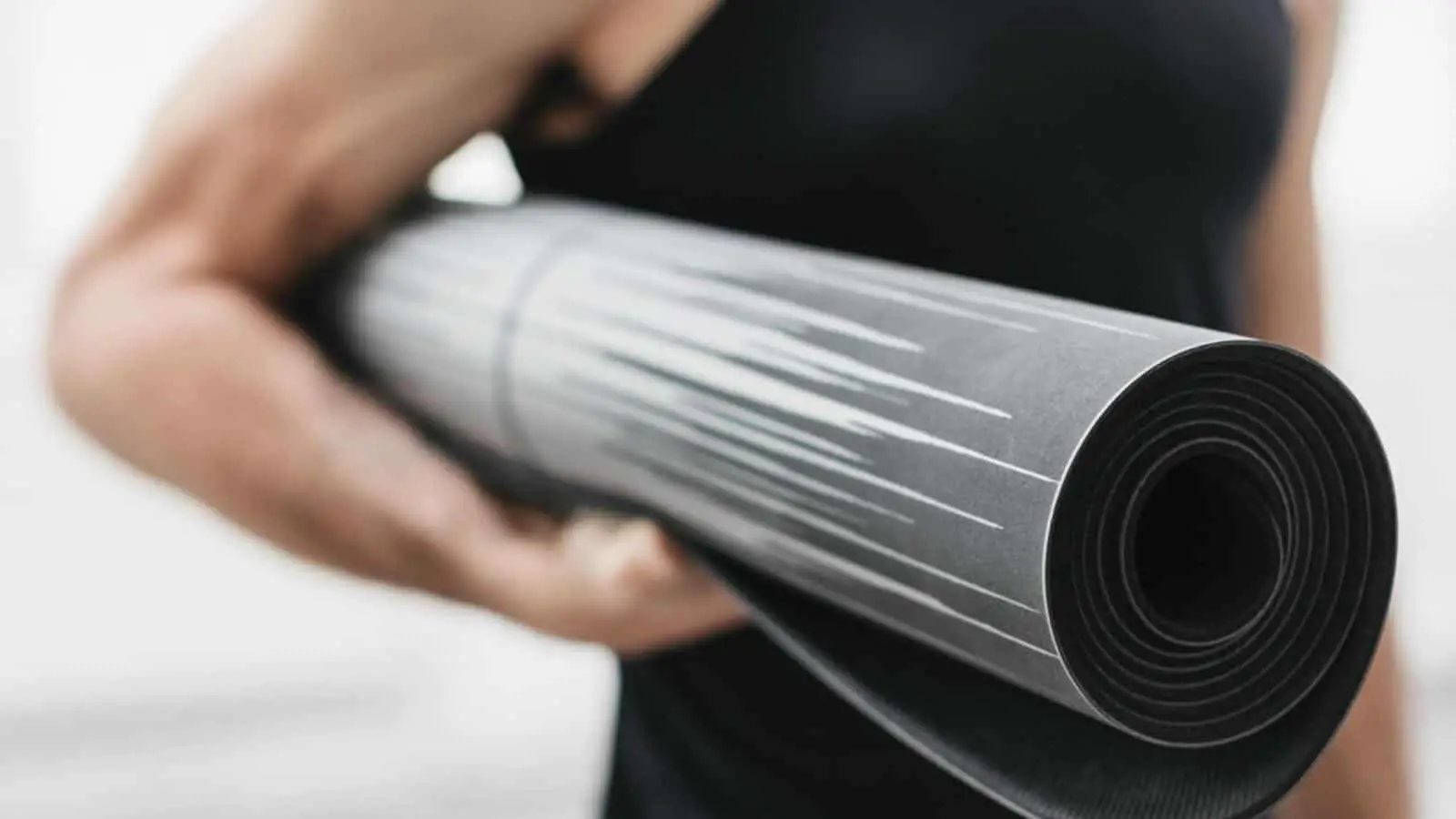As yoga has exploded in popularity in the West, it is no surprise that the number of brands creating yoga products has also increased rapidly. Even when looking to make a basic purchase, such as a yoga mat, it is easy to be overwhelmed by the materials, options, and different price points. Are the more expensive yoga mats worth the cost?
If you are a dedicated yogi, investing in a more expensive yoga mats are worth it, especially if made in an environmentally responsible way. Yoga is not just about practicing asanas but also about living in a way that does not bring harm to life on this planet.
In this article, we will explore more in-depth aspects of yogic philosophy and how they can be applied to the topic of choosing a yoga mat. We will also take a practical look at the materials and processes used to create yoga mats available on the market today. Understanding how to find and choose an environmentally responsible mat will help you make the right choice.
Ahimsa: Does Your Mat Do No Harm?
In the most respected and original text on the subject of yoga, Patanjali’s Yoga Sutras, we are introduced to some essential yogic philosophy. This philosophy, as explained in the Eight Fold Path, introduces us to the Yamas. These are different restraints that yogis bring into their life in order to move forward with their spiritual development.

The very first Yama is Ahimsa. Ahimsa means that the yogi will do no harm. This restraint means living a life of non-violence and living in a way that does not harm others. If you have ever been curious why yogis tend to be vegetarian, it can be traced back to this Yama and individual interpretations of it.
There are many ways to understand this Yama, but as it extends to not harming other humans, or animals, it extends to the natural world as well. By being as environmentally responsible as possible, you live in greater harmony with nature and, therefore, your true self.
There are many ways in the modern world yogis are taking small steps to live in a way that does not further harm the planet. Even simple steps such as bringing reusable produce bags to the grocery store or bringing a travel mug to the coffee shop allow you to be more conscious and avoid causing unnecessary environmental damage.
The items you have for your yoga practice will ideally follow this Yama as well. This can be in the source of your clothing or the way that your yoga mat was made. When it comes time for you to invest in a mat of your own, it is an opportunity to practice Ahimsa and make a choice that shows non-violence towards the earth.
What Is Your Mat Made Of?
One of the biggest differences between different kinds of yoga mats is the materials used to make them. Typically, the cheap mats will be from vinyl or synthetically produced. The eco-friendly mats will utilize a naturally occurring or recycled material. Let’s take a look at what is common in the cheaper mats versus the pricier options.
Polyvinyl Chloride Foam (PVC)
The cheap yoga mats that you can easily find anywhere are typically constructed from PVC or polyvinyl chloride. You may also see this kind of mat referred to as a vinyl mat. Although these are very widespread in their use, partially due to their low cost, this is a type of plastic that is a particularly problematic material for a variety of reasons.
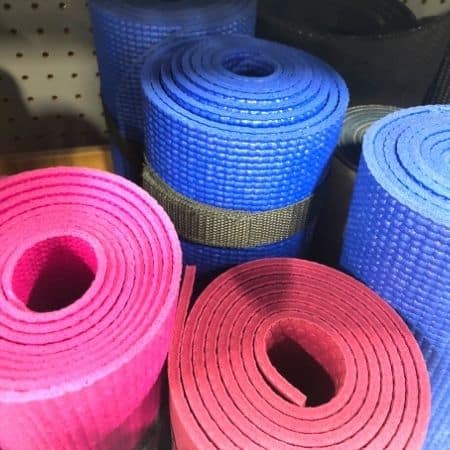
Yoga mats made from this type of material are usually spongy, soft, and flexible. They can feel great on your joints, and the thicker mats can feel like a dream when it’s finally time to come into Savasana. However, it is exactly what makes these mats so comfortable that creates a serious threat to both the environment and the yogi.
What is this ingredient that makes the mats so much more soft and flexible than other items made from PVC, such as pipes? The answer is in the phthalates. Phthalates are chemicals used in the construction of yoga mats to achieve the desired elasticity. However, these chemicals have been shown to have serious health impacts.
Phthalates have been shown to adversely impact many aspects of health in both animals and humans. Research has linked phthalates exposure to negative consequences on just about every body system, from the immune system to the reproductive system.
As you continue to use this mat and it shows signs of wear and tear, it is more likely to release harmful compounds the more it wears out. This can have adverse impacts on the yogi as well as the surrounding environment.
However, the environmental problems continue even once you’ve decided to get rid of your PVC mat. When it comes time to buy a new mat and dispose of your old, worn-out mat, there aren’t many good options to dispose of it. Without a plan to repurpose it, you are left to throw this toxic material into a landfill. Over time, these mats will continue to emit toxins as they sit in landfills for decades.
Even though these plastic mats may have alluring price tags, the amount of harm they can do for generations after purchase should be enough to help promote natural alternatives. Let’s see what other options are out there.
Naturally Sourced and Recycled Rubber
There are a few main source materials used to create environmentally friendly options when it comes to the higher end mats. A popular choice is a rubber, but one that comes from a natural source. Tree rubber, for example, is a commonly used material for high-end mats. It is a biodegradable choice that works well for the design and consistency of an ideal yoga mat.
If you have any type of allergic reaction to latex, you will want to avoid mats made from rubber.
Recycled Plastic Bottles
Some companies have even turned to recycled plastic bottles as source material for sustainable mat creation. This method takes a material that would have ended up in a landfill and upcycles it into sustainable mats and other yoga-related products.
Cork
One of the hot new materials that is starting to catch on when it comes to yoga mats is cork. While these mats will look and feel the most different from plastic mats, they are a truly sustainable option. The way that cork is harvested from trees is a sustainable practice, where the external layer of the tree can be shaved for the material. The tree will then produce more cork to replace what has been shaved away.
Cotton
There are even yoga mats being made from cotton or cotton blends. These tend to have the least amount of spring, being more on the firm side. The topside of the mat will be ready to absorb any sweat and keep you from sliding.
However, if you place this type of mat directly on a hardwood floor, it won’t be able to stay still on its own. You will need to practice on a carpeted floor or choose a cotton mat with its own under grip system. Otherwise, these mats are a nice, natural alternative that will have a long life. They are also more easily recycled or can even be used in the home as a decorative rug.
Jute
Jute is another sustainable material used in making modern yoga mats. This material comes from plants and is a vegetable fiber that undergoes a wonderful transformation when made into yoga mats. It is a great choice because it is a biodegradable material that is very sustainable to produce. When compared to other natural materials, such as cotton, jute requires far less water to grow. This makes it an even more environmentally friendly option.
Is Your Mat Recyclable?
Cheaper mats won’t have the lifespan that higher-quality mats will have. Cheaper PVC mats will wear out more quickly and will leave you needing to dispose of your old mat and purchase a new mat more often than you may like. So, what can you do with your old mat? The answer, unfortunately, is not much.
There are not many existing ways to recycle yoga mats made from PVC. Throwing it away will leave it in a landfill somewhere, to toxically decompose over time. By opting for a mat made from a more sustainable material, you won’t face this dilemma when it comes time for a new mat. Some higher-end yoga brands even have programs where you can send back your old mat, and they will recycle them when you purchase a new mat.
Is Your Mat Ready for Your Practice?
Higher-end yoga mats have additional features that a cheap PVC made mats simply cannot offer to their yogis. These include things like lifespan, texture, and cleanliness. Let’s see what high-quality, sustainably built mats can offer to you and your practice.
Durability: How Long Will It Last
The first of these features is the lifespan. Mats made from sustainable materials are often designed and guaranteed to have a long, durable life. After all, part of living sustainably is not just using quality source material but also not consuming new products constantly. With proper care, these mats can last for years, even with the most dedicated yogis.
This durability stands in contrast to the lifespan of many mats with a low price point. These cheaper mats may need to be replaced regularly, as they will wear out more rapidly with use. You may find these mats quickly show signs of wear, with an uneven surface. What’s even worse is that with the PVC mats, they are likely releasing harmful particles and chemicals as they break down with use.
This can impact you and your skin as you lay on the mat in addition to the surrounding environment.
Anti-Microbial: Keeping Your Mat Naturally Clean
Another feature that you won’t find in many of the cheap mats is naturally occurring antimicrobial features. For instance, cork is a naturally antimicrobial material and will help keep your mat free of accumulated smells and colonies of bacteria that can form over time. It self cleans, meaning less time spent on upkeep and more time spent on practice.
You may see cheap PVC mats advertising antibacterial features as well. However, these are often added agents, and they very well may include chemicals. Perhaps they assist in killing bacteria, but if you are looking for a natural way to care for your mat and your body, you will likely want to avoid this option.
Non-Slip: Choosing the Right Texture
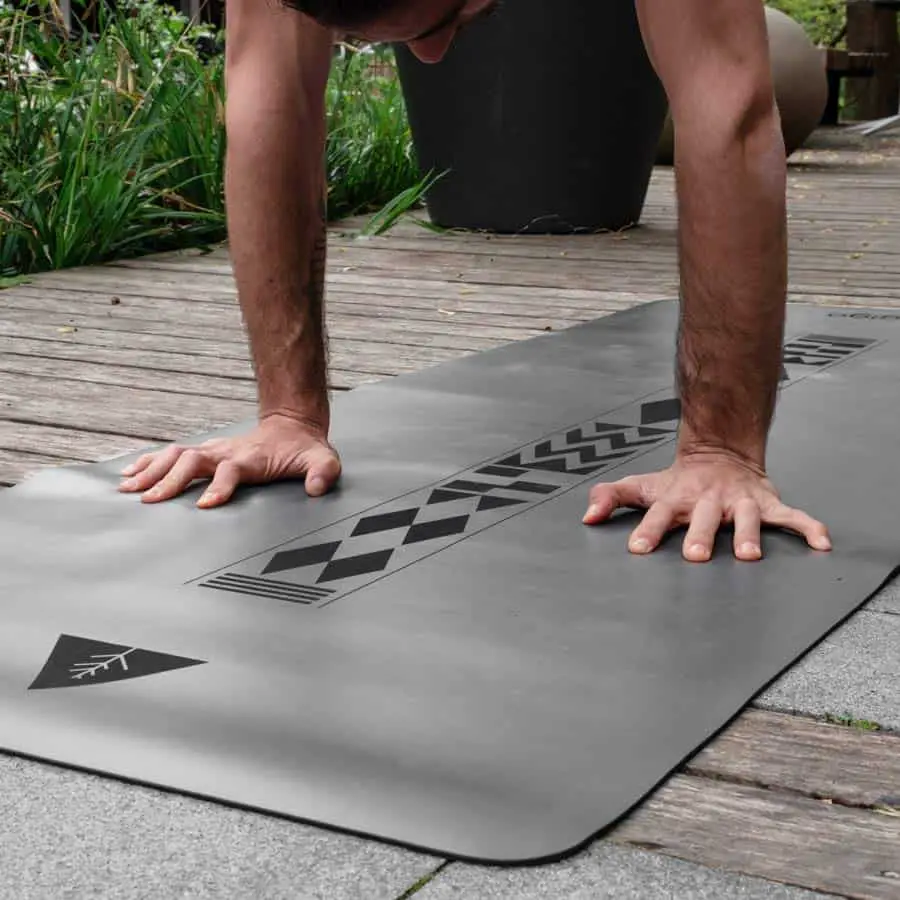
One common complaint from those who end up grabbing the cheapest yoga mat on the market is how slippery these mats can be. Especially when it comes to classes that will get you working up a sweat, slippery mats can not only be inconvenient but dangerous. It is important to feel grounded and dig into the mat, supporting you in every posture.
Many of the eco-friendly brands proudly create mats that are designed to keep you stable throughout your practice. Their non-slip design allows you to feel grounded and safe as you move through all kinds of different postures.
Some of these mats even offer different gripping patterns on the same mat. This ensures the best performance on both sides. On the bottom of your mat, you will have a gripping design that keeps your yoga mat firmly planted where you rolled it out. On the side where you practice, you will have a smoother, textured surface that is designed to provide you sticky grip to keep you secure in any posture you want to try.
If you practice hot yoga on a regular basis, you will want to spend some time researching which mat will be the best for you. It is important that you choose a mat that is prepared to handle the amount of moisture you will likely be producing in a Bikram or other hot yoga class. You will want a mat that will keep you safe and secure.
Thickness: Choosing Between Balance or Joint Support
A common feature that may matter to you when choosing your ideal mat is its thickness. There are a variety of measurements you can choose from nowadays. One-sixteenth of an inch (appx 1.5 mm) will be the thinner mats on the market, while a quarter of an inch (appx 6 mm) will be on the thicker side.
Cushion and Support
If you’re worried about protecting your sensitive joints, particularly the knees, you will want to check the amount of cushioning your mat can provide. Many naturally sourced mats consider this when designing and constructing their mats.
A thick mat will measure about a quarter of an inch (6 mm) in thickness. These mats are ideal for knees in positions such as cat-cow and other positions where your skeleton system is making contact with the ground. This includes protection for your spine in poses where you lay on your back as well as protection for the head, neck, arms, and hands in inversions like headstand or shoulder stand.
Thicker mats are often favored by those who practice slower, stretchier types of yoga. If you typically practice yin, Hatha, or other restorative types of yoga, you will enjoy a thicker mat that will support these styles.
Grounding and Balance
That being said, not all yogis prefer the thicker construction when it comes to their mats. There are still environmentally friendly brands that offer thinner mats. The thinnest yoga mats usually measure in at around one-sixteenth of an inch (1.5 mm). The benefit of these types of mats is that they give you a feeling of being grounded. You are closer to the earth beneath you and can help facilitate better stability for balancing postures.
If you are looking for a more moderate option, you can choose a thickness that falls in between these two. If you choose a mat that is an eighth of an inch in thickness (3 mm), you will have the best of both worlds.
If you practice a more active style of yoga, something where you will need to transition quickly, you may prefer a thinner mat. It will allow you to keep your balance more easily throughout the class and in different positions. If you typically attend vinyasa or ashtanga classes, a thinner mat (of 3 mm) could be an ideal choice for you.
A Note on Portability
If you choose a thicker mat, the mat’s overall size when rolled up will be larger than that of a thinner mat. If you are concerned about your ability to commute easily while carrying your full-sized, well-cushioned mat, don’t worry. Many brands have come up with a solution for this as well.
There are many ultra-thin, foldable travel mats available on the market today. This can be a good option to fold up and pop in a suitcase as well as bring from the office to the yoga studio. These can easily be placed on top of another shared mat from your studio. You are able to practice on a clean surface made from a material of your choice without having to carry around what can be a very comfortable but very bulky yoga mat.
Are All Expensive Mats Sustainably Made?
Unfortunately, just because a mat has a higher price does not automatically mean it is an eco-friendly yoga mat. You will need to do additional research to make sure you are spending your money wisely. To help with your research, here are some questions you can ask to help choose a new mat from a company with sustainable practices and integrity.
What Is the Material and How Has It Been Collected?
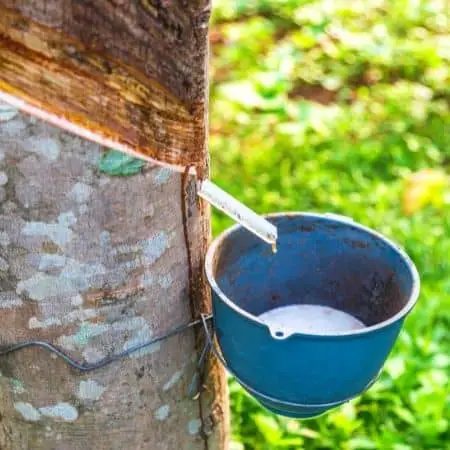
Once you’ve identified a non-plastic alternative you are interested in, take this research one step further. How has it been collected? Is it being done sustainably? Many companies are happy to share their harvesting practices if they are sustainably collecting materials.
For example, naturally sourced rubber often comes from the sap of rubber trees. When collected gently, the extraction of the sap is part of the natural cycle of a healthy tree and does not cause it harm. However, if this resource were to be exploited and collected in an unsustainable manner, it could be harmful to trees and the environment.
When it comes to collecting cork, there is a specific way of collecting it that allows the trees to be undamaged and naturally regenerate. Cork Oak Trees naturally regrow their outer bark when it has been stripped away. To harvest cork sustainably, the tree is never to be cut down. It can handle being shaved once every nine years.
Attempting to collect cork from the same tree more often than this can cause damage and does not allow the tree the time it needs to replenish itself naturally.
This regeneration process means that companies that use cork for their material must follow this naturally-set calendar. If they try to rush the process in the interest of business, they will risk harming the tree permanently. However, when harvested without harm, the tree is actually able to breathe better. It can handle absorbing up to five times more of the amount of carbon dioxide than it could with its pre-shaved bark.
With a little research, you will quickly discover if the mat you are interested in has been harvested in a way that does not harm its source. If you can’t find information about the company’s method of collection, don’t assume the best intentions here. Truly sustainable companies will be transparent in their practices.
How Has the Material Been Processed?
If a brand is processing its materials in a sustainable and chemical-free way, it will likely be very excited to share this information with the consumer. As you read more about the mat you wish to purchase, you can investigate what methods were used to treat the material. For example, mats that are made from natural rubber require foaming agents to complete the process.
If a company is committed to sustainable and eco-friendly practices, it will likely use non-chemical means to process the raw materials. However, not all companies may follow these procedures. Using chemicals can often be cheaper while still appearing to be an eco-friendly mat because of the source material. Be sure to read carefully and double-check that no harmful chemicals were used to make the mat. This is for both the health of the yogi and the planet.
How Long Will It Last? Is There a Guarantee?
When caring for your yoga mat properly, it can last years, perhaps even a decade. Therefore, you can think of the price tag as an investment spread out over the next several years. PVC mats will need to be replaced more rapidly, causing you to spend the same smaller amount of money over and over. By paying more upfront for a quality mat, you can save yourself money in the long term while making a great choice for the environment.
When it comes to guarantees, you can check out the policies of each company. Some may offer a trial period where you can test the mat and return it free of charge. Others may strictly accept no returns. Some may offer guarantees for different periods of time. If this is an important issue for you, it is best to check the details of the particular company you are interested in.
Does This Company Feature Other Sustainable Practices?
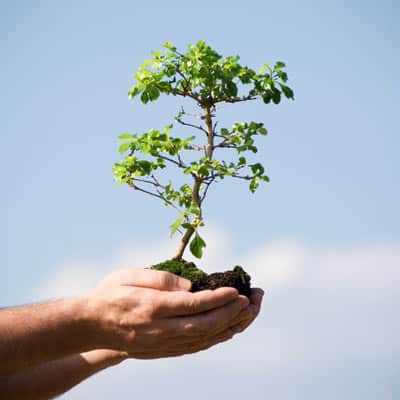
Companies that are deeply committed to sustainability and eco-friendly practices might offer other programs that show their dedication. Suppose you are interested in supporting a company that is doing everything it can to make the world a better place. In that case, you can do a bit of research to see if they offer additional sustainable practices.
Plant a Tree
Some companies offer programs where they take positive environmental action for every mat sold. This action could be planting a tree or something similar. If you want your purchase to do more good than simply getting you a yoga mat, you can choose a company based on these types of programs.
Recycling Programs
As we become more aware of where our trash goes and what we can do to be responsible for our waste, recycling programs are beginning to appear in some companies. These may include recycling older mats from the company in exchange for a new purchase.
In some companies, these types of programs are being expanded to recycling any previously used yoga mat. This is an exciting option if you are concerned about what to do with your old PVC mat that you would like to get rid of without sending it to a landfill.
Are Expensive Yoga Mats Worth it: Final Thoughts
When it comes to choosing an eco-friendly, sustainably created mat, the initial cost is worth it. With more and more genuinely committed brands to sustainable practices, you will be able to choose from a variety of sustainable, responsibly grown, and harvested materials. With more brands and more competition in the market, you will have more choices than ever when it comes to spending your money wisely on the best mat for you and the planet.

